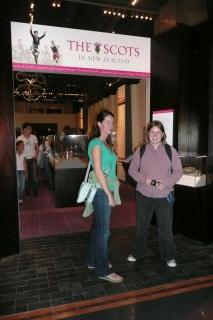The remote East Cape beckoned, and along with the nicest sunny weather for a few days, and some lush green hillocks, the drive was a pleasant one. The countryside is littered with hills with what appear to be steps carved into the side, too small to be terraces for growing plants, too uniform to be sheep paths, and too abundant to be created by man. Google and Wikipedia have not answered our questions, so if anyone out there knows what they are for, let us know!
Tolaga Bay gave us the rare treat of the longest concrete pier in the southern hemisphere, which is being eroded away from the inside as the sand used for the concrete was from a beach so the salt is eating away at the steel supports.
We made it to East Cape, the most Easterly point in New Zealand, and according to the GPS only 1.5 degrees from the western hemisphere, so this is pretty much as far as we can get from home, I reckon if you drilled straight down you’d hit France on the other side. The campsite was probably the most easterly campsite in the world. Also onsite was the most easterly chippy (in the world, according to me as it makes it more interesting), which we made full use of, as if we needed any excuse.
Category: Uncategorised
Art Deco Napier
If there’s anything good that could come of an earthquake, it’s what happened in Napier. Hit by a 7.8 Richter scale earthquake in 1931, the centre of town was flattened. The town planners had a field day (and we’re not talking Milton Keynes or Livingston) and the town was rebuilt in an Art Deco style. Now I wasn’t too sure what Art Deco was, but think straight lines, modern, the New York city skyline and images like the rising sun. All quite nice, but if nothing else it brought home the awesome destructive power of an earthquake.
On a lighter note, our campsite had luxury of luxuries, a covered walkway to the toilet!
Learning about New Zealand

Important job for the day was applying for our Indian visas, which involved handing our passports over to a preoccupied receptionist along with cash and an envelope. All going well we’ll see them again in a couple of weeks, or we might be staying here a bit longer than intended!
Top Wellington attraction in our guide books was Te Papa, the relatively new museum on the waterfront. But this is no ordinary museum, you get the chance to be shaken in an earth quake, jump on stuff, touch lots of screens, wind things up, and feel how heavy rocks from the centre of the earth are. Essentially what all museums should be like, and we left there knowing a lot more about New Zealand, its geology, wildlife, Maori and immigrants.
After that lot we were museumed out, and our legs didn’t fancy seeing more sights, so we hit the road again. We spent the twilight hours in search of the poorly/not signposted DoC campsite, and in true DoC style it was just a field with a toilet. The heavens opened as we pulled up, so to be on the safe side we parked on the road, just so we don’t get washed away in the middle of the night.
Kaikoura, attempt 2
Our return to Kaikoura was a bit more successful than last time, although the whale watch boat trip did have a big sea sickness warning! We were taken a few kilometres off shore where a deep (over 1000m!) sea canyon comes close to shore, bringing with it all manner of sea life, including the fourth largest sea mammal, the sperm whale. As soon as we arrived, a whale had surfaced to replenish it’s oxygen before heading down again for more feeding. That meant 10 minutes of watching the top of the whale blowing, followed by a tail-up dive as it swims back to the bottom. After a lot of microphone whale hunting by the captain, he had located a second whale doing the same. Whilst waiting we had the chance to watch the largest flying seabird, the Wandering Albatross, including getting photographs of them doing a running take-off. So although the obvious blog picture was a whale tail, I’m more proud of the albatross shot, but I think there are enough Albatross photos on here, and I don’t want to turn it into an Albatross blog.